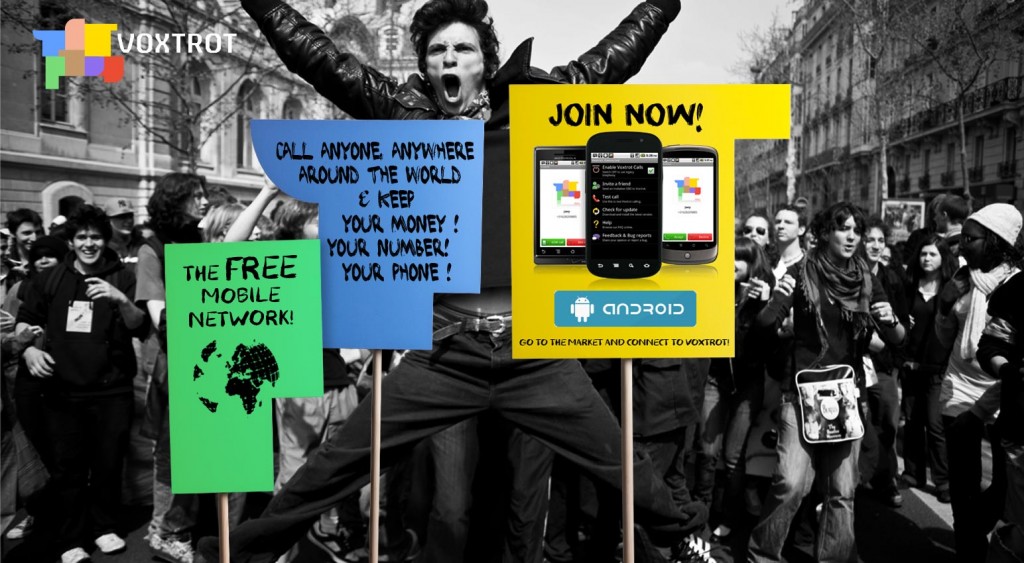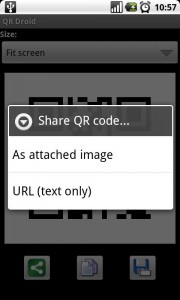 Bringing a new contender into the increasingly-crowded tablet market, Samsung has revealed Galaxy Tab 10.1, their newest Android-based tablet. The new Tab will run Android 3.0, or “Honeycomb”, and can be expected in some markets as early as March.
Bringing a new contender into the increasingly-crowded tablet market, Samsung has revealed Galaxy Tab 10.1, their newest Android-based tablet. The new Tab will run Android 3.0, or “Honeycomb”, and can be expected in some markets as early as March.
The updated Tab 10.1 is powered by NVIDIA’s dual-core Tegra 2 processor and sports a 10.1-inch screen with a 1280×800 resolution (slightly better than the current iPad’s resolution). There will be 16 and 32 GB models, and both will support WiFi and 3G capability on GSM networks. Unlike the original Galaxy Tab, the Tab 10.1 will not include Samsung’s Android platform customizations or its TouchWiz user interface. It will be a stock, untainted Honeycomb device.
The Tab 10.1 is lightweight at 1.23 pounds; it weighs less than both the iPad and the Motorola Xoom. Android enthusiasts are going to have some tough tablet choices to make in the next month or so, but the relative similarity of the hardware specs between the devices means there isn’t a lot of differentiation going on yet.
The arrival of Honeycomb could finally give Samsung the kind of software user experience needed to compete with iPad in a way that the original Tab could not.
Category: Small Biz Applications
VOXTROT
The cost of making international calls on your mobile can be one of the most dreaded things about international travel. Thankfully, a new startup called Voxtrot (http://voxtrot.com), has jumped on the scene to help with this problem. Voxtrot™ is a Swiss company founded by enthusiastic entrepreneurs with a passion for cutting-edge technology and innovation.
Bascally, Voxtrot is a free mobile network. On the Voxtrot network it’s as if your mobile carrier is giving you free worldwide mobile calls. Unlike other “free” call and text services there are no logins, usernames or passwords to forget, and you can use your everyday contact list. In short, you use your phone as you always have, so long as the person you are calling is also connected to Voxtrot. If that’s the case, the call will be free! It’s a potential international-calling game changer.
Right now Voxtrot is only available on Android™, but other platforms will be supported in the near future. Although its use is limited to others using the service, this is still a great solution for business since it would be easy to set up everyone in your organization before the next big business trip.
So, how is this possible? Well, in a nutshell, Voxtrot simply uses the Internet to connect you to any other Voxtrotter in the world. It works anywhere, on all types of networks including EDGE, GPRS, UMTS/3G, HSDPA, and WiFi. Voxtrot works seamlessly with the existing apps on your phone and your current carrier.
You can download Voxtrot from the Android Market or you can get it directly with your mobile browser on join.voxtrot.com
You can find out more about Voxtrot on their beta website and on Facebook and Twitter.
Intuit GoPayment is the New Smartphone Credit Card Processor in Town
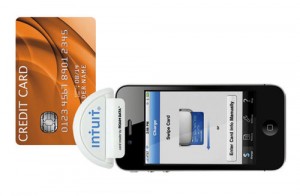 Recently announced, Intuit (the company behind QuickBooks) has released a smartphone credit card precessing service for small businesses called GoPayment that allows you to accept and swipe credit cards with your smartphone. The GoPayment service consists of the GoPayment app and a free card reader for low-volume businesses that attaches to your phone via the headphone jack.
Recently announced, Intuit (the company behind QuickBooks) has released a smartphone credit card precessing service for small businesses called GoPayment that allows you to accept and swipe credit cards with your smartphone. The GoPayment service consists of the GoPayment app and a free card reader for low-volume businesses that attaches to your phone via the headphone jack.
What makes GoPayment so attractive for small businesses is instead of monthly fees, you are charged a transaction fee per swipe. The GoPayment transaction fees are very competitive at 2.7% of the total transaction + 15 cents for swiped transactions and 3.7% + 15 cents for manual (keyed in) transactions.
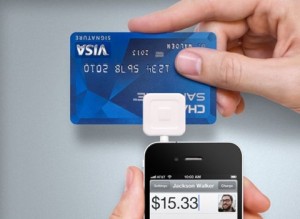 The GoPayment service is almost identical to the already established Square service where you also get a free reader and the basic per transaction fees mirror each other. Where GoPayment changes the game is if you do manage to do some heavy transaction volumes. With GoPayment, you can opt for a $12.95 monthly fee drop down to 1.5% + 30 cents for swiped transactions and 2.7% + 30 cents for manual transactions. Additionally, up to 50 users can use one account if you have multiple people accepting credit cards on your company’s behalf. GoPayment still isn’t any sort of Square killer, because you do need a merchant account to use Intuit whereas Square is merchant-account free.
The GoPayment service is almost identical to the already established Square service where you also get a free reader and the basic per transaction fees mirror each other. Where GoPayment changes the game is if you do manage to do some heavy transaction volumes. With GoPayment, you can opt for a $12.95 monthly fee drop down to 1.5% + 30 cents for swiped transactions and 2.7% + 30 cents for manual transactions. Additionally, up to 50 users can use one account if you have multiple people accepting credit cards on your company’s behalf. GoPayment still isn’t any sort of Square killer, because you do need a merchant account to use Intuit whereas Square is merchant-account free.
Regardless of which one you choose, services like this are a Godsend for small businesses who don’t do enough transactions to justify the regular credit card processing fees; but needs to adapt to their clients “I don’t have any cash/checks on me” mentality that comes with the popularity of using plastic for all things financial these days.
GoPayment is available for iPhone, Android, and BlackBerry (as well as some tablets) and the app and card reader are free when you sign up.
via: SlashGear
Customer Support On the Go with Zendesk for iPad
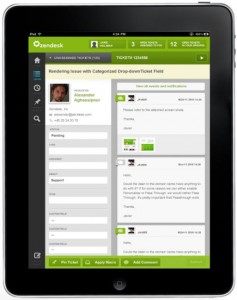 Customer Support requests can come in at ANY time. As a small business owner, your clients may or may not recognize your “regular business hours of blank to blank.” So the ability to at the very least respond to requests is essential, even if a solution won’t be provided until you get back to your office.
Customer Support requests can come in at ANY time. As a small business owner, your clients may or may not recognize your “regular business hours of blank to blank.” So the ability to at the very least respond to requests is essential, even if a solution won’t be provided until you get back to your office.
Zendesk helps mobilize your customer support portal with its suite of mobile apps for iPhone, Android and BlackBerry. With more screen real estate to play with, the iPad app now joins that group with added functionality, and to give your eyes a rest. Features include:
View Current Ticket Activity: Get real-time updates and receive notification on tickets assigned to a team member through the ticket activity stream – An exclusive iPad feature.
Complete Ticket Work-flow: Act on tickets immediately, or bookmark a ticket to respond later. With the iPad app, users can create macros to send pre-defined responses to frequently asked questions.
…Not mention the coolness of using your iPad to handle customer support requests if you decide to do a little work while on vacay. Zendesk plans start at 10 bucks a month and the mobile apps (including the iPad) are free. As quick and easy it is to start handling tickets like a pro with Zendesk, it is now equally as fast to get started answering customer requests, no matter where you are, with Zendesk for iPad.
…Your eyes will thank you too!
http://www.youtube.com/watch?v=enexL56_NvM&feature=player_embedded
Google Adds security for Consumer Market
 Every day, more and more of our personal information flies around on the Internet and so data security becomes increasingly important. Unfortunately for average Joe the web user, security has been stagnant for years; you pick your username and password, and you take your chances.
Every day, more and more of our personal information flies around on the Internet and so data security becomes increasingly important. Unfortunately for average Joe the web user, security has been stagnant for years; you pick your username and password, and you take your chances.
Fortunately, Google is making some authentication and security options much robust for those who want it. Enter “two-factor authentication” which was available to Google Apps customers since September and is now rolling out to everyone. The interface is a bit confusing, and the set-up process is cantankerous, but it’s well worth looking into if you’re looking to up your security quotient. You can activate this new security option by hitting the ‘two-step verification’ link on this page.
So, what exactly does it do? Well, when you login to your Google account, you’ll need to enter both your existing password and a second passcode — one that you can’t write down, memorize, or lose, because it’s always changing. Because the second passcode is dynamic, it’s nearly impossible to phish. This second password is generated by new mobile app called ‘Google Authenticator’ which is available for Android, iPhone, and BlackBerry. The code can be generated with a non-smartphone by having Google call or send a text message to the phone number that you enter during the feature setup. Much like Agent Maxwell Smart, your generated password will only be good for a short period of time.
It’s not as work intensive as it sounds, because you can elect to only require this second password once per computer. This is enough to prevent phishing, but doesn’t mean you’re generating new passwords each time you log on. In order to save passwords in most desktop apps, you’ll have to generate a unique app-specific password for each application that you would like to protect. But again, you can save this in your key chain so you only have to do it once per app.
So, maybe you’re thinking “that’s great, but what if I change phones for some reason?” Well, you can designate a second, backup phone number to which the passcodes can be sent. Two-factor authentication isn’t a new idea. Business folks probably remember getting a code off of their key fob to access the office VPN for years now. However, giving consumers access to this same protection is a big win for security of personal information.
Citrix Enteriprise Client Available on WebOS Tablet at Launch
 Just to further point out that HP Palm is ready to put some “umph” into launching its first WebOS tablet since HP bought Palm last year, it was recently announced that the popular Citrix Receiver will be available on the HP TouchPad when it is released to the public.
Just to further point out that HP Palm is ready to put some “umph” into launching its first WebOS tablet since HP bought Palm last year, it was recently announced that the popular Citrix Receiver will be available on the HP TouchPad when it is released to the public.
From the Citrix Blog:
Citrix Receiver is a lightweight software client that will turn any webOS device into a powerful business tool by providing secure Enterprise access business desktops and any Windows, Web or SaaS application. The immediate benefit for webOS consumers is that Citrix will make webOS devices enterprise-ready by securely delivering access to the existing ecosystem of Windows based apps: Citrix Receiver will instantly enable new webOS devices for the enterprise!
That means with little hassle, companies can safely integrate webOS devices with the all of the IT polices and standards that will give end-users access business desktops, apps and docs that Citrix claims will “make you productive from anywhere on any device.”
Currently, the Citrix Reciever is a free app available on just about any mobile device/platorm (now including WebOS Tablets) and has reached over two million downloads. Their is also a free demo that you can use to see if there is room in your operation for virtual computing.
Tumblita for iPad
The iPad’s MobileSafari is a big pretty browser which allows users to use the full version of most websites as opposed to a mobile version or a separate application. Facebook notably did not make a special app for iPad stating that the browser was powerful enough to support a full Facebook experience. However, iOS’ limitations often cripple the iPad’s browser, especially when it comes to uploading media. Often great sites are slow to produce an app, leaving unreliable 3rd parties to fill the hole. Tumblr is one of these sites that has left iPad users in limbo, sure there is an app designed for iPhone, but it just does not do justice to the 10 inch tablet. In steps Tumblita to bring sexy back to your iPad Tumblr experience.

Tumblr, for the uninitiated, is Twitter for blogs, it was even created by the same folks that created Twitter. Tumblr is without a doubt my favorite and most used social networking service. Tumblr is a very powerful social networking tool that is perfect for startups. It is by far the most social of the blogging platforms because of it’s unique feature of letting you reblog others posts. Tumblita lets you view your Tumblr dashboard in a ‘river of information’ style interface seen in many mail applications and RSS readers. There is a large view of a single post which is dynamic, and a static list of other posts, positioned to the side in landscape mode, and as a pop out list in portrait mode. Tumblita also supports posting new media to your blog, the main feature that was missing when using the mobile browser. You can also easily schedule posts for the future, add tags, and more. There are still more features that regular Tumblr users would like to see, like asking questions and replying to posts, but Tumblita is still the best Tumblr experience on iPad to date. With some work this application could be truly great.
Scan (and Create) QR Codes with QRDroid
 Seriously, there are TONS of QR code readers out there. For Android, the simple and trusty Barcode Scanner app works just fine for Android devices. But if you want to actually create a QR code of ANY information using your smartphone, that drastically reduces the number of quality QR apps.
Seriously, there are TONS of QR code readers out there. For Android, the simple and trusty Barcode Scanner app works just fine for Android devices. But if you want to actually create a QR code of ANY information using your smartphone, that drastically reduces the number of quality QR apps.
QRDroid on the other hand, is a complete QR code reader/generator that will not only scan QR codes from your camera, decode them from images saved in your device or from URL of images stored on internet sites; but also creates QR codes in less than one second from your contacts, bookmarks and installed applications.
You can also create a code for calendar events, phone numbers, geo-locations, sms, or any text you want. Once you generate the code, it will display on the phone’s screen so another person with a QR code reader can scan it; or you can send the code via text, email, or IM. The ability to scan QR codes found while surfing the web on your Android device is enough of an incentive for me.
But allow me to provide a real-world business application: You are at a networking event and during your pitch you mention your website. The other person is pretty tech-savvy, so they whip out his/her smartphone to type in the address. Instead of you both of fumbling around with correctly pronouncing and accurately typing in your lengthy URL (that you KNOW you should have changed), you can use QRDroid to generate a QR code that he/she can scan and immediately to be sent to your site.
It also works well if you run out of business cards and you know that very next person you talk to is going to ask for one. If they have a QR Code reader, simply take a couple of seconds to create a code so you will be ready when they extend their hand to receive your business card (that will probably end up filing away anyway).
You can get QRDroid as a free app, or you can donate $1.50 to get the ad-free version. Hit up [the new and improved] Android Market for more information/download
…or scan this QR code with your Android device
NFC coming to IOS
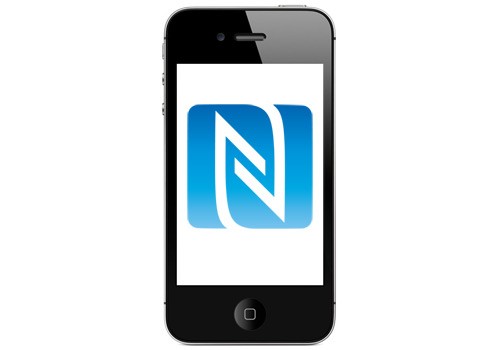 There are always lots of rumors flying around in the tech world, but this time the “hot new thing” seems to be more than vaporware. Richard Doherty of the Envisioneering Group cites “engineers who are working on hardware” for Apple’s latest project as evidence that NFC capabilities are being built into the upcoming generation of iOS devices. NFC stands for “Near Field Communications”, and enables the short-range transfer of data through a device. Sounds boring? Well, imagine having the ability to tap your phone against an enabled pad to pay for things (with the credit card data transferring through your sim card) and this technology becomes much more exciting. Payments via NFC have seen both increasing press coverage and increasing adoption among big name retailers in the west, and this technology is already commonplace in Japan. Doherty also predicts that Apple will make its move into the field with some new hardware and an accompanying update to iTunes. Apple’s concept would allow iTunes gift card balances and credit card information stored with Apple to be used as payments at compatible retail outlets… just by waving your phone close to the register. It also appears that Apple is planning to entice users away from competitors with loyalty credits and points. There are already a couple of software patent applications from the company detailing other potential uses for the technology. All of this could mean absolutely nothing, rumors being what they are, but this sure does walk like an NFC duck and quack like an NFC duck…so don’t worry about making an educated guess here.
There are always lots of rumors flying around in the tech world, but this time the “hot new thing” seems to be more than vaporware. Richard Doherty of the Envisioneering Group cites “engineers who are working on hardware” for Apple’s latest project as evidence that NFC capabilities are being built into the upcoming generation of iOS devices. NFC stands for “Near Field Communications”, and enables the short-range transfer of data through a device. Sounds boring? Well, imagine having the ability to tap your phone against an enabled pad to pay for things (with the credit card data transferring through your sim card) and this technology becomes much more exciting. Payments via NFC have seen both increasing press coverage and increasing adoption among big name retailers in the west, and this technology is already commonplace in Japan. Doherty also predicts that Apple will make its move into the field with some new hardware and an accompanying update to iTunes. Apple’s concept would allow iTunes gift card balances and credit card information stored with Apple to be used as payments at compatible retail outlets… just by waving your phone close to the register. It also appears that Apple is planning to entice users away from competitors with loyalty credits and points. There are already a couple of software patent applications from the company detailing other potential uses for the technology. All of this could mean absolutely nothing, rumors being what they are, but this sure does walk like an NFC duck and quack like an NFC duck…so don’t worry about making an educated guess here.
Google “Apps Lab” is hiring
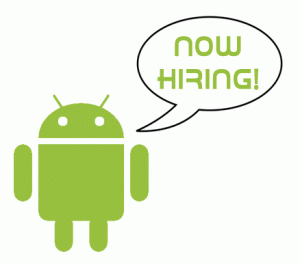 In an attempt to close the “app gap” between Android and iOS, Google has recently announced plans to hire “dozens” of software engineers, product managers, user-interface experts and “others who have ideas for mobile apps.”
In an attempt to close the “app gap” between Android and iOS, Google has recently announced plans to hire “dozens” of software engineers, product managers, user-interface experts and “others who have ideas for mobile apps.”
Currently, there are over 100,00 mobile apps in the Android Market with less than two-dozen of those apps developed in house by Google devs. Furthermore, most of those apps are Google-branded apps (Maps, YouTube, GMail, etc.). So this is a pretty big step by Google at improving their reach and closing the app gap with Apple. Google is also courting 3rd Party devs with incentives like getting their apps pre-installed on many Android phones.
Side Note: Personally, I think Google’s first order of business would be to greatly improve its own Marketplace on the web and give people the option to buy and “push” apps directly to their phones, but that’s just me.
So, if you’ve been thinking about getting into the mobile app development game, or have an idea for an app and want to pitch it to a notable company or a big-time development house…
What bigger name than Skynet Google?
